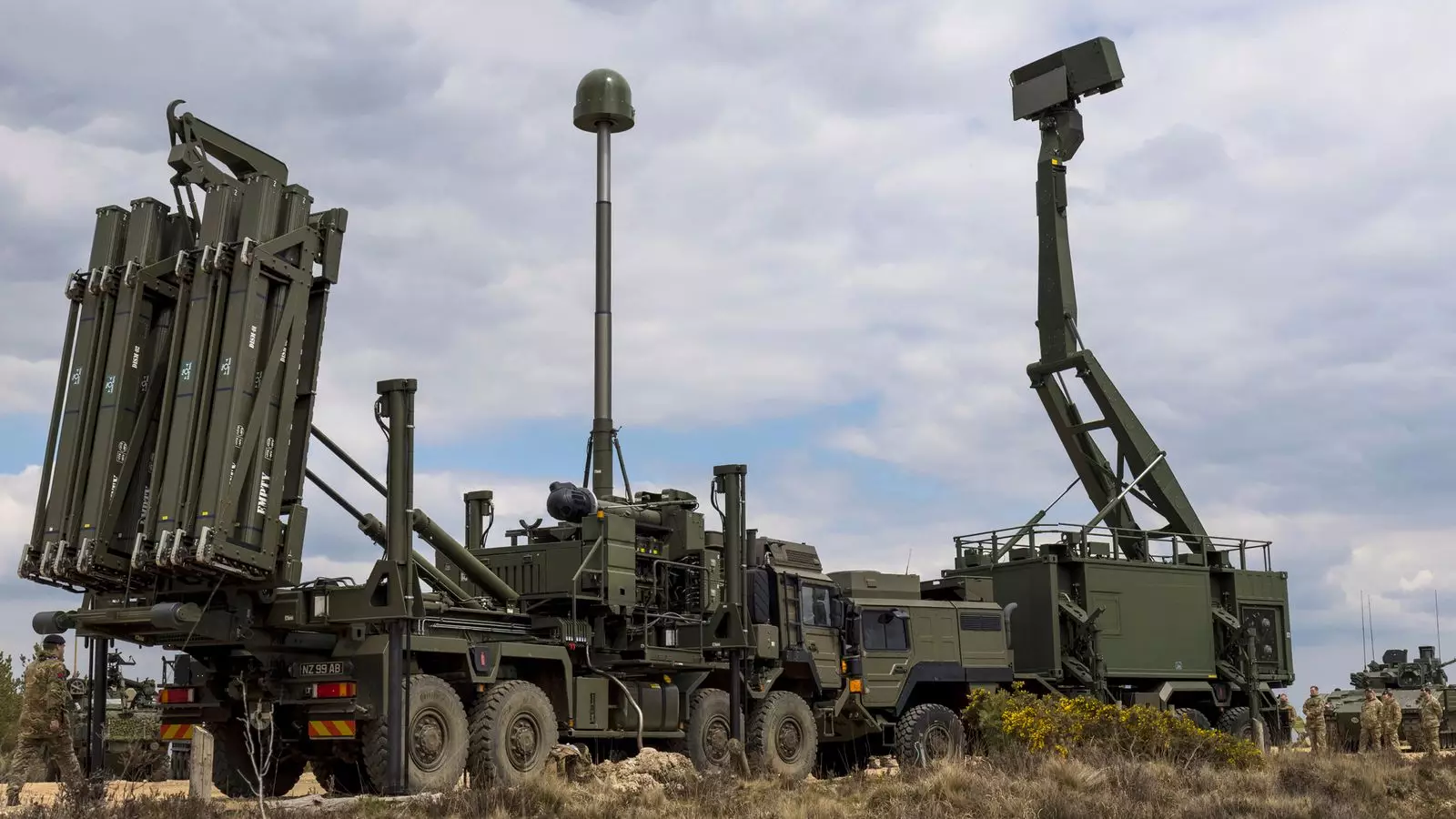For decades, the notion that the UK could rely on outdated air defense systems to safeguard its borders has been a misleading comfort. The recent announcement of a £118 million investment in new missile defense systems by the Ministry of Defence underscores a reactive attempt to address an increasingly volatile global environment. But does this move genuinely increase the country’s security or merely serve as a Band-Aid on a gaping wound? The truth is stark: the UK’s missile defense capabilities remain fundamentally insufficient against modern threats, revealing a troubling complacency that risks leaving the nation vulnerable.
The Sky Sabre system, which is now in use, represents an evolution from the antiquated Rapier system. It’s a technological improvement, no doubt, with faster reaction times, better integration, and a greater range of threats it can intercept. Yet, behind its impressive specs lies a deeper issue—the illusion that point-defense systems, even modern ones like Sky Sabre, can shield a nation from comprehensive missile threats. While effective against aircraft and drones, their inability to counter advanced ballistic and hypersonic missiles exposes a critical weakness. The UK’s reliance on land-based missile systems for national defense is akin to building an umbrella that’s effective only in light drizzle but utterly useless in a storm.
Are We Truly Protected or Just Pushing the Problem Away?
The UK’s strategic posture appears to be a patchwork of limited, tactical defenses rather than a serious, layered national missile shield. The historic Cold War Bloodhound missiles, once stationed around the UK, have long been dismantled—a historical relic now replaced by hopes that newer land-based systems will fill the void. However, the update to Sky Sabre and the new missile stockpile is more of a tactical reinforcement rather than a strategic shield capable of repelling a concerted, high-intensity missile attack.
The reality is sobering: today’s geopolitical climate is markedly more dangerous than during the Cold War. The recent conflicts in Ukraine and the Middle East have shattered the illusion that warfare is limited to conventional ground combat or air superiority. Instead, missile technology has advanced rapidly, and non-state actors and traditional adversaries alike are now capable of launching increasingly sophisticated missile strikes against civilian and strategic infrastructure. The UK’s current defenses are ill-equipped for this new reality, leaving a dangerous gap that could be exploited at worst, ignored at best.
The nation’s minimal investment in missile defense contrasts sharply with the mounting global proliferation of missile technology, especially hypersonic weapons. These high-speed, highly maneuverable missiles render traditional interceptors like Sky Sabre insufficient, and the UK’s lack of a comprehensive, layered ballistic missile defense system amounts to a strategic naïveté. Relying on allies’ defense systems, such as the U.S. or NATO assets, is no substitute for an independent, resilient missile defense capability that can deter or, if necessary, respond to a missile attack on UK soil.
The Urgency of Rethinking National Security Priorities
Post-Cold War complacency has left the UK woefully unprepared for today’s missile threats. The initial underestimation of these dangers led to the dismantling of crucial missile systems and a reluctance to prioritize missile defense as a core component of national security. Now, with observable escalation in missile proliferation worldwide, this blinkered approach is proving dangerously myopic.
Investments like the £118 million purchase of the Land Ceptor missiles should be seen as mere drops in an increasingly strained ocean. Without significant, strategic reinvestment in missile defense infrastructure—covering both land and sea—the UK will find itself increasingly exposed to missile strikes that could target critical infrastructure, military assets, or civilian populations with devastating effect. It is a gamble that the nation’s security can rely on delayed responses or allied support—an assumption that could prove fatal in a future conflict where speed and independence are paramount.
In essence, the UK stands at a precipice: either it sharpens its missile defense defenses into a credible shield capable of countering the most advanced threats or it continues to pretend that traditional measures suffice in an era defined by technological escalation. The choice is clear, and the stakes could not be higher.


Leave a Reply